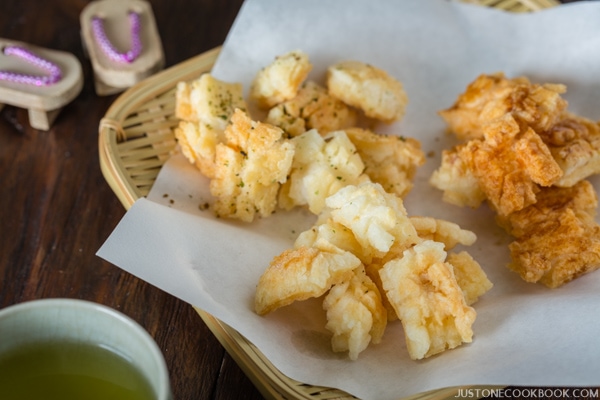
The Japanese New Year celebration was over a few months ago and if you still have leftover rice cakes in your pantry or freezer and you’re not sure what to do with them, here’s a great solution. I’ll show you a quick and easy homemade rice cracker recipe.
If you are all-year-round mochi eater like me, don’t forget to check out my favorite mochi recipes at the end of this post!

Homemade Rice Cracker Recipe
Are you familiar with rice crackers? If not, here’s a quick intro. There are two types of rice crackers: Senbei and Okaki.Senbei vs. Okaki
Senbei (煎餅) or Osenbei (お煎餅) are rice crackers made of rice (うるち米). The origin of senbei is actually from China. The Chinese rice crackers that were brought to Japan during Heian Period (789-1185) were actually made with flour (technically “flour crackers”). However, Japanese loved rice so much that they started making the crackers with rice instead. That’s how senbei started become popular in Japan.Okaki (おかき) are rice crackers made of sweet rice/glutinous rice (もち米). We call smaller size okaki Arare (あられ). Just like senbei, okaki has been around since Heian Period. People didn’t want to toss the mochi used for New Year’s decoration (Kagami Mochi), so they scraped the mochi to smaller pieces with hands, dried them, and deep fried to enjoy the leftover mochi. You might noticed that I said “scraped the mochi with hands“. Why hands, you might ask? In Samurai’s house, using cutlery at the beginning of the new year was considered bad luck, so people used their hands to scrape the big mochi into smaller pieces, instead of using a knife.
Different Size, Shapes, Flavors for Rice Crackers
Rice crackers come in various sizes, shapes (squares, rectangular, round, ball), and flavors (usually savory but sometimes sweet). There are several ways to make them: you can bake, grill (traditionally over charcoal), or deep-fry.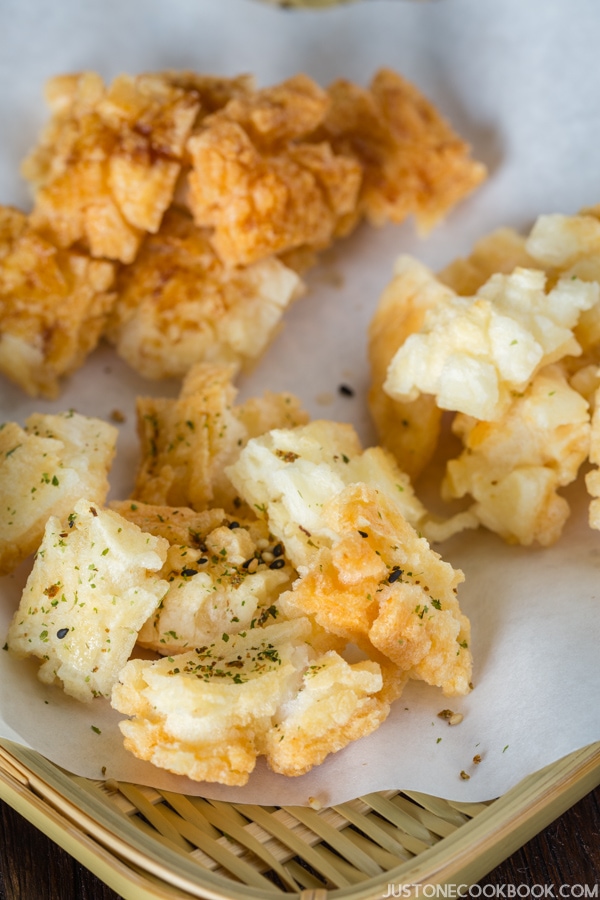
Kakimochi (かき餅) – Rice Cracker Recipe
For today’s rice cracker recipe, we will use mochi (sweet rice/glutinous rice); therefore, this is a type of Okaki instead of Senbei. This particular Okaki is called Kakimochi (かき餅) in Japanese.The process to make Kakimochi at home is very easy. Cut mochi into thin slices, air dry completely until moisture is removed, then break into small pieces and deep fry.
The dried mochi pieces will puff up like popcorn while deep frying in oil. Immediately after being fried, season Kakimochi with your favorite flavors: salt, soy sauce, Furikake, Shichimi Togarashi, or even curry powder!
Although Kakimochi can be purchased easily at grocery stores in Japan, homemade ones are the best! And it’s super easy!
Ingredients
- 4 kirimochi (rectangular rice cake) or homemade mochi
- Oil for deep frying (vegetable, canola, etc.)
Seasoning Option
Instructions
- Cut kirimochi into small pieces and ⅛” (3 mm) thickness. Lay the mochi pieces in a single layer on a flat tray or wire rack.
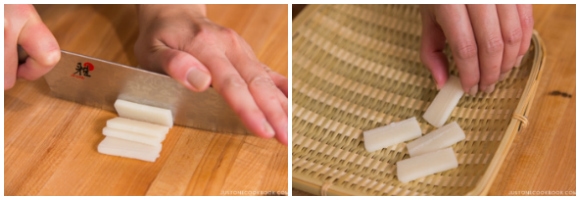
- Allow them to air dry with good ventilation for at least one week. As mochi pieces dehydrate, they might break into smaller pieces so try not to touch. The surface of mochi pieces will be cracked and flaky and texture will be harder.

- In a frying pan (I use a cast iron skillet), add the oil to about ¾” (2 cm) deep and bring it to 340F (170C). Add a few pieces of mochi pieces first. If small bubbles start to appear around the mochi, then add more pieces in a single layer, keeping some space in between as they pop and expand. The mochi pieces will turn white and puff up.
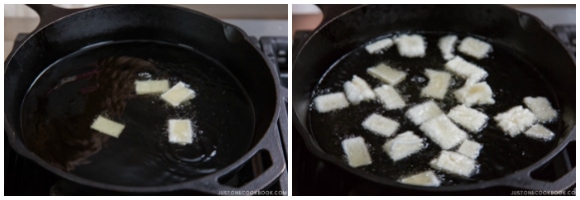
- Turn over each piece and cook until mochi pieces are popped and lightly golden brown. Increase the heat to 350F (180C) and fry till mochi pieces are golden brown.
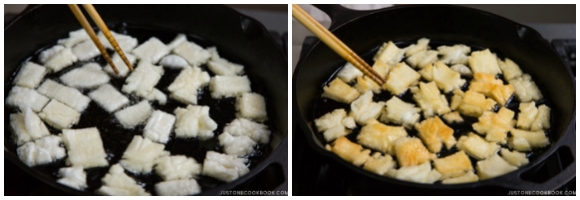
- Remove the mochi pieces from the oil and place a wire rack or a plate lined with paper towels. While they are hot, season with salt.
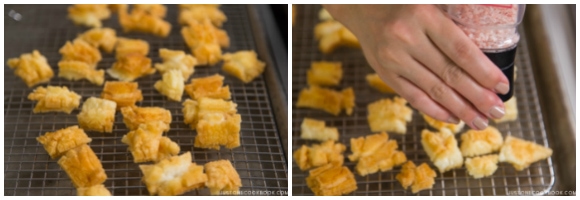
- Optionally, you can sprinkle furikake or brush soy sauce (adjust the amount of salt if you use soy sauce). Best to be consumed immediately or I recommend on the same day.
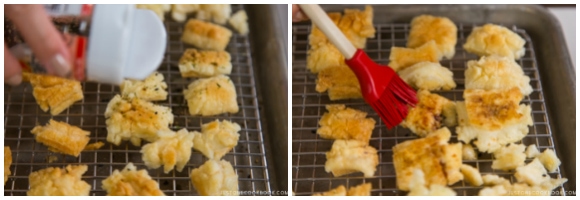
Notes
Alternatively you can bake the mochi pieces at 400F for 15 mins. You can brush oil and season with salt (so salt will stick to the rice crackers).If you have leftover dried mochi pieces, keep them in an air tight container or Ziploc bag and store at the room temperature.
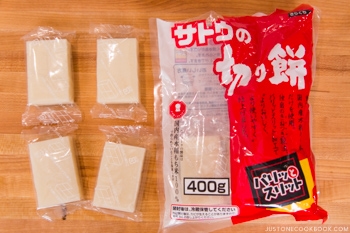
Comments
Post a Comment